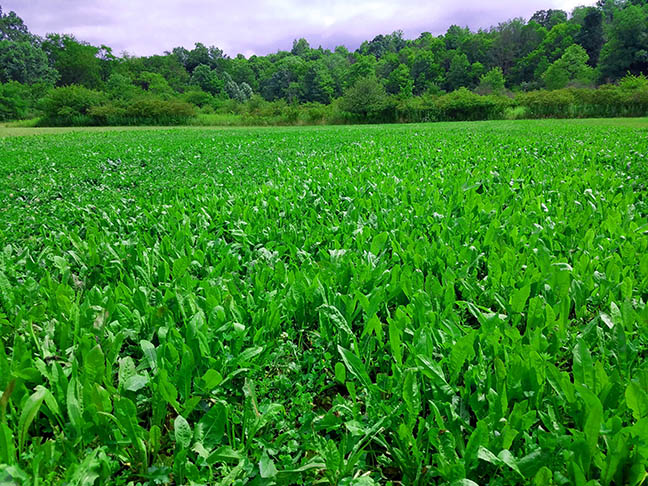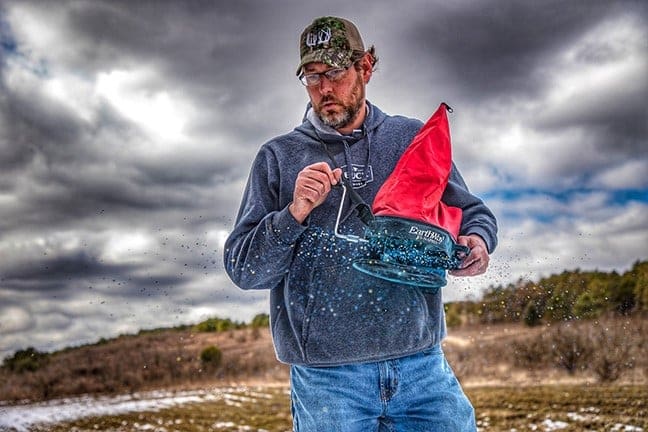ScentLok ambassador, Jason Say, enjoys teaching other hunters how to manage their land more effectively to foster trophy growth. Based in Pennsylvania, he consults with clients in Pennsylvania, Ohio, Kentucky, New York, Maryland, Connecticut, Ohio, Kentucky, and West Virginia.
Besides offering habitat management services, Say has also been a fixture in whitetail hunting content, first with Wired Outdoors, and now with All-In and Dash Outdoors.

“On the hunting side, I’ve been playing with food plots since I started hunting years ago, and things just progressed to where I’m consistently shooting big bucks in a state that’s not known for big bucks,” offers Say.
Over the past seven years, that’s amounted to a 146, 151, 155, and 165 – “all mature deer, which is rare in my part of Pennsylvania, largely the result of my habitat management.”
Along with his big buck hunting success, Say’s habitat management consulting business, Field Days, has grown, with a lot of time spent on the road consulting.
“There’s nothing I love more than working hard on a piece of property and making it what my customer wanted it to be – a big buck property.”

Frost Seeding Now: The Nitty Gritty
Now that we’re in midwinter, the topic of frost seeding is coming up more in conversation with hunters managing food plots. While often misunderstood, states Say, it’s a great way to get your plot going early without the need for a lot of machinery.
“I love frost seeding because it’s an unbelievably simple method to establish a great food plot,” notes Say.
“The key is timing. No matter what region you’re in, when you get to the last week where you’re toggling between freezing and thawing—basically, when it freezes at night and thaws in the afternoon during daylight, that’s when you want to do your frost seeding.”
In NW Pennsylvania, that means the middle of March for Say, but will vary from state to state.
“Frost seeding is how I establish perennial plots of clover and chicory, specifically a blend called Fusion from The Whitetail Institute, that the deer absolutely love here,” offers Say.

Two Frost Seeding Methods
Say distills frost seeding down into two easy-to-understand methods.
“First, you might have a clover plot from the year before with some bare spots, due to lack of seed or drought. In this case, frost seeding is a great way to thicken up the clover. It’s simple. To frost seed, all you need is a hand spreader; there’s no discs or tillers involved. It’s all about making seed-to-soil contact with the hand-spreader.”
He says a general rule of thumb is if you’re working with an existing perennial plot where there was clover the year before, spread at the rate that’s recommended for new planting your particular blend. Most seed companies will recommend about 8 pounds an acre, or 4 pounds per half acre. Once the ground starts to warm up, you’ll see the clover starting to sprout and once it gets to four or five inches tall, you’ll want to spray it with herbicides Arrest Max & Slay from The Whitetail Institute, which control grasses and broadleaf weeds. Then, in summer, he recommends mowing the clover to about four or five inches tall.
“Secondly, let’s say you had an annual plot the year before, which was turnips or radishes, which you plant every year. The method that has worked well for me is planting annuals for two years and then rotating them. Every time I need to rotate an annual plot into a perennial, I will simply go out and frost seed in the middle of March, which works 60-70% of the time. This saves me having to get the disk out and spray everything. Frost seeding is simple at the start, with a little bit of spring and summer maintenance, and then you end up with a great-looking perennial plot come fall.”

“And that’s it,” summarizes Say. “Frost seeding is a system that will help grow big bucks. While I’m a huge proponent of diversity and planting good food, whitetails love clover and chicory all summer into fall.”
Still, he says growing big bucks can be a lot more than just frost seeding.
“It’s just another tool in the toolbox of habitat management and creating the diversity that landowners need. For me, practicing good soil health is critical to making sure food grows every single year. The best way to do that is to take care of the soil and property, currently rotating perennials to annuals when you need to.”
At the end of the day, he says frost seeding is a great way to establish food plots without banging up your soil with discs and tillers with positive results and minimized, yet strategic effort.

